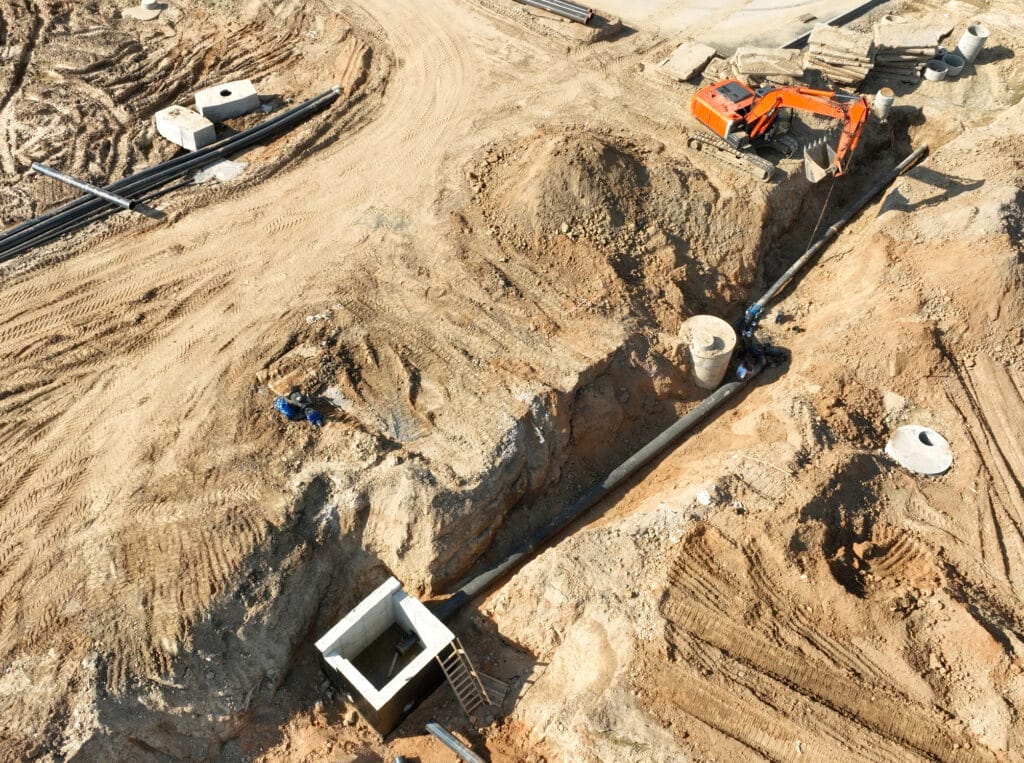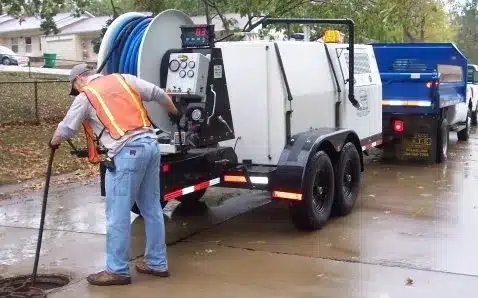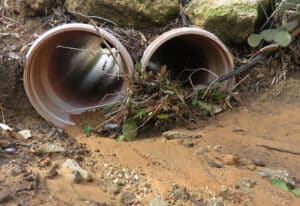

No one likes to be told what to build or not to build on their property. But it’s worse seeing everything you’ve built go to waste because of flooding on your property.
A drainage easement can help save you and your neighbors from that nightmare.
A drainage easement is a legal agreement to grant government authorities limited access to maintain drainage infrastructure on your property.
There are strict guidelines about building anything near this drainage infrastructure that must be followed.
Drainage easements can be a mixed bag for property owners. On one hand, they’ll help keep your property safe from flooding. And on the other hand, they can cut down your property value.
So don’t sign any drainage easement documents without consulting an experienced eminent domain lawyer first. They can permanently impact your ownership rights and land value.
Your lawyer will ensure you’re fully compensated for any damages you face caused by the drainage easement.
Call Your Texas Eminent Domain Lawyer For A FREE Case Review And Know What Your Case Is Worth.
A drainage easement is a right you give to a government authority to access and use a specific part of your property for water management.
The keywords here are ‘access’ and ‘use.’
It means your property rights are at stake. You’re limiting your own freedom to use a specific part of your property by signing this agreement.
A drainage easement can be used for two main reasons:
It’s important to know that signing this agreement will have permanent consequences. You need to sign the drainage easement and record it at your local area’s register of deeds.
Once you’ve done that, you’ve officially appended your property deed. This agreement will remain tied to your property deed and will be transferred to any future owners. You’ll still own the land and pay taxes on it. You’re only giving specific rights to government authorities.
It can only be taken away if the government violates the agreement or willingly surrenders the easement.
An easement area can include:
There are three essential parts in the legal process of establishing a drainage easement:

Do you know why your property value depreciates due to a drainage easement?
It includes a huge set of property restrictions such as:
That’s a lot of NOs to keep up with. Even if you never planned to modify your property, it’s still going to eat into your property value.
Lack of utility = lack of value.
You won’t get the price you deserve if you plan to sell or mortgage the property someday.
You’ll still have to bear the responsibility to maintain the drainage area and provide easy access to government authorities. You’ll have to take measures to prevent land erosion from obstructing the drainage.
Government authorities are also permitted to make reasonable modifications to maintain the drainage area. Any damages suffered in this process will drag down your property value further.
It’s hard to convince insurance companies to provide coverage to a property with drainage issues. This will further sabotage your ability to secure a mortgage.
Why? Because homeowner’s insurance is a pre-requisite for securing it. You may have to purchase additional flood hazard insurance to secure your property.
So make sure you thoroughly review the restrictions you’ll have to follow before signing a drainage easement.
It’s the government’s duty to ensure drainage easement areas are properly maintained. However, they’ll direct most of the maintenance responsibilities to the property owner.
The easement holder will take charge of any construction and repair work needed in the area. They will take charge of more heavy-duty maintenance work like replacing broken pipes, repairing sinkholes, clearing drain pipes and catch basins.
Your primary responsibility is to keep the drainage area free from obstructions.

Here are some tasks you’ll be expected to take care of as a property owner:
There are clear guidelines for controlling excess vegetation in the easement area. Vegetation shouldn’t be over 18 inches in height to allow easy drainage.
There are two scenarios where you may need to consult an eminent domain attorney:
Hire an experienced eminent domain lawyer in the beginning and you may never even end up facing the second scenario. They’ll evaluate all the risks you’re taking on and ensure you get comfortably compensated for any loss of property value.
Your lawyer will try to limit the land restrictions and maintenance work needed from your end. This will protect your property value and save you the stress of extensive maintenance tasks.
The best part is you won’t have to pay our experienced domain lawyers anything upfront.
You only have to pay us once we win your settlement. And we guarantee to get you a much better offer than the one you first received from the government.
The Takings clause in the Fifth Amendment prevents government authorities from taking control of any private property until the owner received just compensation.
Your eminent domain lawyer will evaluate these four key elements to determine the right compensation for you:
Your compensation sum mainly depends on the size of the government’s takings of your land. They will give you an offer proportionate to their land control and access demands.
Call Your Texas Eminent Domain Lawyer For A FREE Case Review And Know What Your Case Is Worth.
Here’s how a drainage easement can affect your property value:
It depends on whether your construction limits access to the easement area or messes with the drainage infrastructure.
As long as it doesn’t interfere with this, you have the freedom to build the structure you need. It’s best to consult your eminent domain lawyer to clear the path for your plans when you sign the agreement.
Responsibilities for drainage easement are shared between the property owner and easement holder. The government authority will generally take care of the heavy-duty repair and maintenance work.
For instance, repairing pipes and clearing catch basins requires special equipment and expert supervision. So, property owners don’t have to worry about taking care of it.
However, the majority of maintenance work will be taken care of by the property owner, including tasks such as:
Insurance companies will give you a tough time if your property has a drainage easement area. A high-risk property means low profit for your insurer.
There are greater chances of you demanding a payout because of a flooding issue.
So chances are they will either deny you homeowner’s insurance. Or they may charge you massive premiums to stay covered. o provide coverage to a property with drainage issues.
It’s recommended to buy additional flood hazard coverage to get properly compensated for any possible damages.
Here’s why you need an experienced eminent domain lawyer to back you up:
Fair compensation is about much more than getting the market value for a patch of land.
There are a number of factors you must carefully evaluate to determine fair compensation for a drainage easement:

Let's Help Bring You Back
Call now for a FREE Case Review.
Can’t talk right now? Tell us about your accident using the form below.
We’ll respond within 15 minutes during normal business hours.